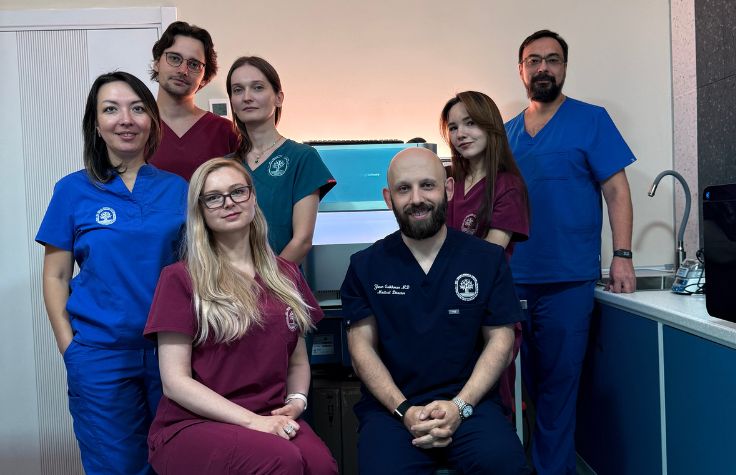
25 April 2017
In honor of National DNA Day, we invited Illumina’s head of Scientific Affairs, Jacques Retief, to share his perspective on recent scientific break-throughs. DNA Day celebrates the discovery and understanding of DNA and the scientific advances that understanding has made possible. It is a holiday celebrated each April 25 and commemorates the day in 1953 when James Watson, Francis Crick, Maurice Wilkins, Rosalind Franklin, and colleagues published papers in the journal Nature on the structure of DNA.
Guest writer: Jacques Retief

When Watson and Crick made that famous remark, “It has not escaped our notice that the specific pairing that we have postulated immediately suggests a possible copying ...,” even they may not have anticipated how DNA sequencing would infiltrate the uttermost recesses of biological research.
DNA analysis reveals that giraffes belong to 4 distinct species
A recent paper reports that giraffes actually belong to four distinct species, which has a profound impact on the breeding and preservation of the species. Giraffes hardly ever appear on our dinner plates, so we may not particularly care, but this is just the latest in many studies where DNA is used to peer under the surface of apparently identical organisms to determine genetic and functional differences.
Hidden populations are particularly prevalent in fish, which accounts for about 17% of the global population's intake of animal protein
Hidden populations are particularly prevalent in fish, which accounts for about 17% of the global population's intake of animal protein. The use of DNA to unravel the number of populations and population diversity will help to guide efforts to maintain healthy fish populations. To protect fish populations and consumers, genetic markers can be used to track the origin and species of fish sold at retail outlets as well as any pathogens they may contain. Fish stocks can also be threatened by invasive species. In another fish-related application, environmental DNA is used to track invasive species. All living organisms leave a cloud of DNA as they sluff off epithelial cells and die and decompose. By sequencing aquatic sediments, researchers can detect the presence of invasive species, even if the species is very stealthy and never seen.
In a remarkable extension of this approach, researchers were able to sequence lake sediment cores and detect the presence of plants and animals from ecological systems that existed as long ago as the end of the last ice age. Due to the low temperatures, there were no earth worms in North America at the time. There are now more than 180 earthworm species in the US and Canada, and environmental DNA can be used to classify and map their populations. DNA sequencing can also be used to map their microbiome.
Our own microbiome plays into maintaining our physical and mental health. In the same way, every worm and insect carries its own metagenome. Even the 1mm long C. elegans worm has its very own metagenome. Far from being idle observations, all this research may lead to environmentally sound tools to control pests, diseases, and invasive species.
This type of research may not be the stuff of breathless headlines, but it contributes to a fundamentally new way of understanding ourselves and the world around us. It should not escape our notice that a sound knowledge of these complex interactions is critical to maintain food security and human health as the human population increases, and there is ever-mounting pressure on the environment.
Happy DNA Day!
In the United States, DNA Day was first celebrated on April 25, 2003, by proclamation of both the Senate and the House of Representatives. Each year since, annual DNA Day celebrations have been organized by the National Human Genome Research Institute (NHGRI). For more information, please visit: https://www.genome.gov/dnaday


